It's Tree Frog Week on iNaturalist! Apr 10 - Apr 17, 2016
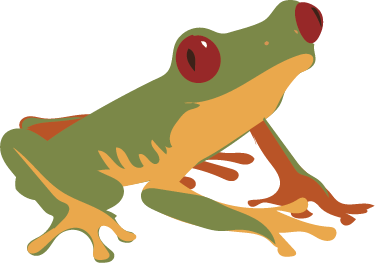
The Critter Calendar makes a return to the world of, well, critters - it’s Tree Frog Week!
The Hylidae family of frogs is often known as “tree frogs and their allies” because of its large diversity, which includes many of what we traditionally think of as tree frogs, like the iconic Red-eyed Tree Frog, as well as frogs which don’t live arboreal lives at all. There are about 900 species in the family and they are found throughout much of the world, excepting sub-Saharan Africa and northern Eurasia. Many species are concentrated in the Americas and in Australia and Oceania.
Characteristic traits of those hylids adapted to an arboreal life are large feet with sticky toe pads and forward-facing eyes which give them enhanced depth perception. Unlike geckos, whose toe pads use a form of “dry” molecular adhesion, hylid toe pads have microscopic hexagonal cells which create friction with a surface, and grooves between the cells which allow for the flow of mucus, also aiding with adhesion. Most hylids are green or brown in coloration, with various markings, and have powerful legs for jumping.
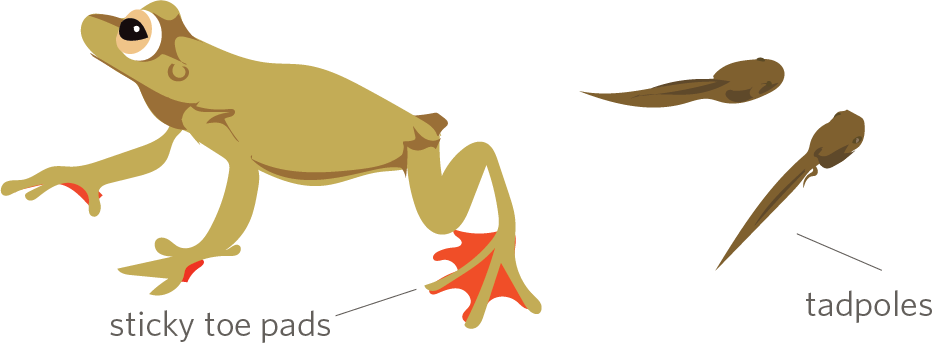
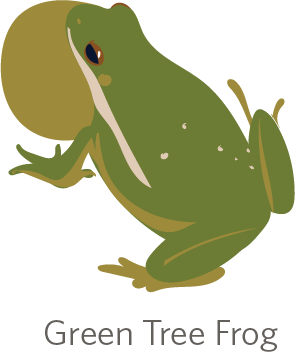
Hylinae - this large subfamily has a wide distribution and includes the European Tree Frog, which is found throughout Europe, northern Africa, and temperate parts of Asia east to Japan. Other notable members include the Spring Peeper, which is found in eastern North America, and the Brazilian Heart-tongued Frogs, which live and breed in bromeliads. The tadpole of the Paradoxical Frog grows huge (up to 10” long!) but morphs into an adult that is perhaps one quarter of that size. This subfamily is also home to the world’s only known venomous frogs, described last year.
Phyllomedusinae - the “leaf frogs,” which are found in Central and South America. Many species of this small subfamily, like the Waxy Monkey Frog, lay their eggs not in water but on leaves which hang over water. When the tadpoles hatch they fall into the water and live as filter feeders. The adults, then, never have to return to the ground to breed. The Gliding Tree Frog uses its webbed feet to glide while jumping between branches.
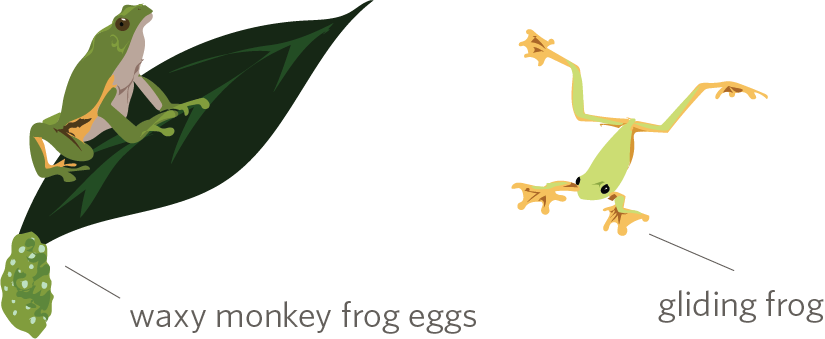
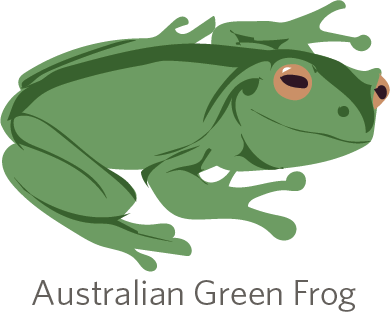
Pelodryadinae - the Austro-Papuan tree frogs. Found in Oceania, there are over 160 species in this subfamily. The Australian Green Tree Frog (aka White’s Tree Frog) is commonly found around dwellings and is commonly sold in the pet trade. They are members of the genus Litoria, which are distinguished by having horizontal irises. This subfamily also includes the Cyclorana genus of burrowing frogs, which are completely terrestrial. These frogs live in dry areas, remaining dormant underground for up to five years until big rains bring them to the surface. They lack toe pads.
Look and listen for hylids this week, but remember that frogs are fragile creatures and handling them can be harmful to their health. Share your findings with us on iNaturalist, we’ll be keeping track here. Happy tree frog hunting!





Comentários
There are many fragile creatures, so please don't touch them.
It isn't nice to see here many photos of butterflies taken for wings (only for example) ...
Please, take your natural observations without touching fragile creatures, thank you very much!
Delightful little amphibians, we have our own subspecies here in Crete, Greece and I've even had one living in the wall of my house. One gets a brief mention and photo in http://cretenature.blogspot.gr/2014/02/the-road-to-nowhere.html
I had one on my shepards hook at the first of the week, took pic of it but cant download on this pc but it was green tree frog
Why isn't the Common Tree Frog (Polypedates leucomystax) from south east asia fitting in?
That one's actually in a different family: Rhacophoridae from Hylidae
oh ok, thank you for the answer! I saw the drawing of the gliding frog and thought that Rhacophoridae where included! Sorry I should have read that it was Hylidae only!
Adicionar um Comentário